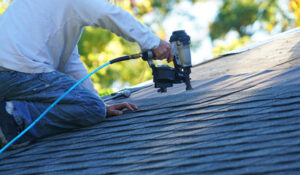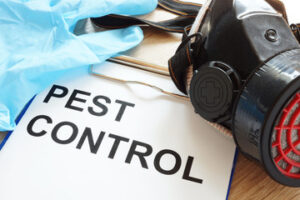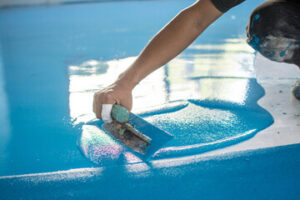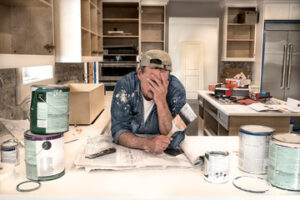Personal Injury Lawyer Duluth specializes in cases where the victim was hurt due to someone else’s negligence, errors or wrongdoing. They conduct a thorough investigation and develop legal strategies to prove liability.

Compensation can cover a variety of expenses and losses, including medical bills, lost wages, property damage, and pain and suffering. A personal injury attorney is skilled at evaluating and calculating the full value of your damages.
A good personal injury lawyer will be able to help you get the compensation you deserve for your injuries. This includes money for medical bills, lost wages, and other expenses associated with your accident. Your attorney will also be able to help you recover any damages that are based on emotional distress and pain and suffering.
A personal injury attorney will also be able to help you understand the laws in your state. Different states have their own statutes of limitations, which is the time period during which you are allowed to file a lawsuit for your injury. This is a very important factor to consider, as waiting too long can result in losing your right to file a claim altogether.
Another thing a personal injury lawyer will do for you is deal with insurance companies on your behalf. This can be extremely helpful, as insurers are often trying to find ways to deny claims or minimize payouts. A personal injury lawyer will be able to protect you from these pitfalls by handling all communications with the insurer and even preparing you for any statements you might need to give.
In addition to the money you need for your medical treatment and other expenses, a personal injury lawyer can also help you get compensation for any other damages you have suffered as a result of the accident. These may include loss of enjoyment of life, loss of companionship, and loss of consortium, among others. It is important to discuss these with your attorney so they can properly assess them and include them in your case.
In most cases, a personal injury lawyer will work on a contingency basis, which means that they won’t charge you any upfront fees for taking your case. However, you should always read the lawyer’s fee agreement carefully before signing it to make sure you understand how much they will be charging you for their services. Generally speaking, personal injury lawyers will take an agreed-upon percentage of any compensation they win for you through settlement or verdict. This arrangement ensures that your attorney’s interests are aligned with yours, as they will be motivated to secure maximum compensation for you.
Time Limits
A personal injury lawyer has to comply with strict time limits, known as Statutes of Limitations. These dictate how long a claimant has to seek legal action after an accident. If you miss a deadline, you lose your right to sue for damages.
For most personal injury cases, you have three years from the date of your injury to file a lawsuit. However, there are exceptions. If you were a minor or legally incapacitated at the time of your injury, the statute of limitations might be tolled or put on hold until they turn 18 or regain capacity. In other situations, a personal injury lawyer may be able to extend the time limit for you to file a lawsuit.
While it might seem counterintuitive to file a lawsuit before the statute of limitations runs out, it is crucial to do so. This ensures that the case is fresh and that witnesses and evidence are still available to you. Furthermore, it helps prevent fraudulent claims that might otherwise be filed after the deadline has expired.
Statutes of limitations also provide legal certainty to defendants, as they know that they cannot be held liable for a claim brought by a victim after the expiry of the limit. This balances the rights of victims to receive fair compensation and the needs of defendants to avoid unfair exposure to litigation from outdated claims.
The main reason why the legal system has these time limits is to allow the courts to deal with claims fairly and efficiently. Without time limits, it would be nearly impossible for the courts to keep up with the sheer number of cases that are filed. This could lead to delays, which might prejudice the defendants and impact their ability to defend themselves effectively.
Moreover, the legal system wants to make sure that evidence and witness memories are still fresh, so they can be used in court. This is why time limits are imposed on legal actions, and they must be obeyed in order to protect victims and defendants alike.
Expertise
In a personal injury case, an attorney helps clients pursue financial compensation for physical, psychological or reputational damage inflicted on them by the intentional or negligent actions of another person or entity. By navigating the many legal hurdles, medical access and insurance coverage complexities involved in accident claims, personal injury lawyers serve as a vital resource for victims who are seeking justice. In doing so, these lawyers fulfill their innate desire to help others while serving as a catalyst for change in the communities they serve.
Depending on the type of injury and the circumstances surrounding it, a personal injury lawyer may need to review an extensive amount of evidence in order to properly assess a claim and determine liability. This may include witness testimony, police reports, medical records and forensic analysis of any available video or photographic evidence. In some cases, an attorney may also hire expert witnesses to provide testimony regarding the nature and extent of a client’s injuries.
One of the most important skills that a personal injury lawyer must have is the ability to effectively manage clients. This is because some injured persons can be difficult to deal with, particularly if they are highly emotional or are suffering from serious mental health issues. An attorney should be able to remain calm and explain the legal process clearly, while ensuring that clients understand the limitations and risks associated with their particular case.
Other questions to ask potential personal injury lawyers include whether or not they have their own team of investigators who can document the scene, interview witnesses and develop theories about how an incident occurred. They should also be able to identify outside experts who can assist with a case, such as an accident reconstruction specialist.
A good personal injury attorney will also be a member of a number of national and state legal organizations that specialize in representing injured parties. These groups host and sponsor legal education seminars, publish articles and lobby for the rights of injured consumers.
It is also helpful to see if a potential personal injury lawyer has written any legal publications or given talks on the subject of representing injured persons. This can indicate that they are regarded as an expert in their field and that other attorneys respect them.
Experience
Personal injury attorneys specialize in representing victims of accidents caused by the negligent actions of others. They understand how to negotiate with insurance companies and can help you navigate the legal process. They also know when to file a lawsuit in order to protect your rights and get you the compensation you deserve.
A good personal injury attorney will have a strong arsenal of evidence to build a compelling case on your behalf. This can include medical records that demonstrate the severity of your injuries, witness testimony shedding light on the accident circumstances, photographs and video footage that provide visual proof, police reports that confirm the facts of the case, and other documents that support your claim.
These documents can help your attorney calculate the value of your damages. These may include monetary compensation for medical expenses, lost income, damage to personal property, pain and suffering, loss of consortium, and other losses related to your injury.
Some attorneys will also have relationships with specialized experts, such as accident reconstruction specialists, forensics professionals, and doctors who can strengthen your case and compel the insurer to offer a more favorable settlement. Having an experienced personal injury lawyer by your side can also signal to the insurance company that you are serious about your case and will not be intimidated by them.
When an injury happens, it can leave the victim frustrated and confused about their next steps. A personal injury attorney can take the pressure off their clients by handling all communications with the liable party’s insurance provider. This helps avoid mistakes that could undermine the client’s case.
When you hire a personal injury lawyer, expect that the attorney will be your main point of contact throughout the entire process. They should be willing to answer any questions you have and make themselves available to meet when needed. They should also be available for consultations outside of business hours so you can get the help you need, when you need it.








